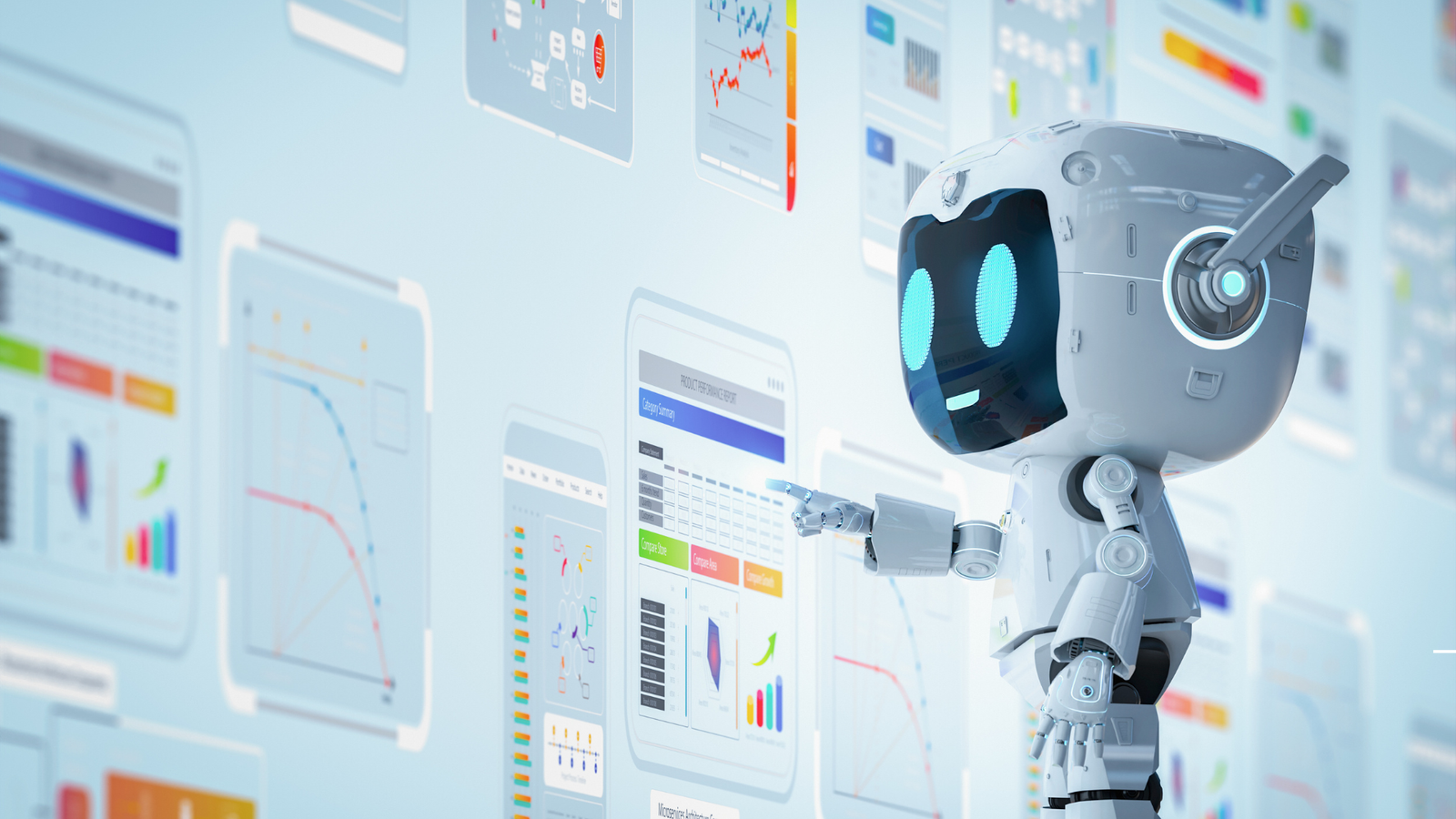Is AI the Missing Piece in Your Training Puzzle?
If you’re an HR or L&D professional, you’ve probably seen AI popping up everywhere, from chatbots to auto-generated training scripts. It’s exciting… and a bit overwhelming, right?
The truth is, while artificial intelligence sounds like a futuristic tool, it’s already quietly making its way into how we learn, train, and grow. And no, it’s not about replacing instructors or turning everything robotic. It’s about enhancing what we already do with more speed, personalization, and insight.
Let’s unpack what that actually looks like in a real-world training setup.

1. Personalization, But Smarter
We’ve all tried the ‘one-size-fits-all’ training approach. It doesn’t work, not really. Some learners skim, some struggle, others disengage completely.
AI changes that.
Imagine A system that learns about your learners, how they interact with content, what topics they struggle with, when they tend to drop off and then gently adjusts their learning journey. No manual intervention, no endless custom modules. Just smart nudges in the right direction.
It’s like giving each learner a personal coach… without the payroll line item.
2. More Time for Strategy, Less Time on Admin
Let’s be honest, L&D teams often spend more time coordinating sessions, enrolling employees, checking completions, and sending reminders than actually focusing on learning quality.
What if AI could handle the admin?
From automated grading to enrolment flows to nudging learners at the right time, AI frees you up to do the strategic work that actually moves the needle: analyzing outcomes, improving design, and creating programs that actually resonate.
3. Feedback When It Matters Most
Learners don’t just need content, they need timely feedback.
That’s where AI shines.
Instead of waiting for a weekly review or instructor comment, learners can get instant insights on where they went wrong, what to revisit, and where they’re improving. It keeps them engaged and makes the learning loop much tighter.
In short, AI isn’t some cold machine taking over your role.
It’s more like that super-efficient team member who’s quietly handling the behind-the-scenes chaos, so you can focus on real impact. How Real L&D Teams Are Actually Using AI
Let’s get real, AI sounds great in theory, but how do you actually use it in a way that doesn’t require a tech team or a six-month rollout?
The good news is, you don’t need to ‘go full AI’ to get value from it. Many L&D teams are already using AI quietly, subtly, and effectivelywithout even realizing it.
Let’s walk through how this plays out in day-to-day training.

1. Creating Content Faster (Without Starting from Zero)
One of the biggest time-eaters in any L&D project?
Writing.
Outlines. Scripts. Quiz questions. Voiceover narration. Translations. It’s exhausting.
AI tools like ChatGPT, Jasper, or Copy.ai don’t replace your ideas they just help you get to the first draft faster. You still apply the polish, the tone, and the strategy. But the heavy lifting? Way lighter.
Need a quick quiz based on a module?
Done.
Need to convert a long webinar into bite-sized microlearning?
AI can help with that too.
And when you layer on video tools like Synthesia or Pictory, you can turn those drafts into professional-looking training assets sometimes in the same afternoon.
2. On-Demand Learning Support (That’s Not Just an FAQ Page)
Here’s something simple but powerful: an AI-powered chatbot inside your LMS.
Think of it as your learners’ 24/7 assistant.
Got a question? Stuck on a step? Don’t know where to go next?
Instead of digging through documents or waiting for a response from HR, the chatbot steps in. It can guide learners, recommend next steps, even provide practice questions.
It’s especially useful for onboarding, compliance, or anytime learners feel lost but don’t want to raise their hand.
3. Personalization, But On Autopilot
Let’s say you have 200 employees in different roles, skill levels, and locations. Traditionally, you’d spend weeks building paths and assigning courses manually.
AI-powered learning platforms?
They handle this for you.
They observe how someone learns, how fast they move, what they engage with and then adjust the content accordingly. Someone who’s advanced might skip the basics. Someone who’s struggling gets a slower, more supportive path.
It’s not magic. It’s machine learning. And it means better engagement, better retention, and less dropout.
So no, AI isn’t just for tech giants or fancy startups.
It’s already being used by learning teams who want to move faster, personalize better, and spend less time in spreadsheets.
The Catch? AI Isn’t Perfect But That’s Okay
We’ve talked about how AI can speed things up, personalize learning, and free up your time.
But let’s be honest it’s not all plug-and-play magic.
Like any tool, AI comes with its own quirks, limits, and risks.
And if you’re going to use it well, it helps to go in with eyes wide open.
Let’s talk about the not-so-glamorous side.
AI Can Miss the Nuance
Have you ever read AI-generated content and thought “Hmm… this sounds okay, but kind of… off?”
That’s because AI still struggles with context. It doesn’t know your company culture. It doesn’t understand tone. It won’t always hit the right emotion or reflect your internal processes.
If you need a quick compliance refresher or a basic process checklist? AI can help. But if you’re creating a course that teaches leadership, empathy, or your brand’s unique voice? You’ll still need a human to shape the story.
The Data Side: Not Always as Clean as You Think
AI thrives on data but here’s the thing, if the data is flawed, the output will be too.
That means:
- Generic advice when you need specificity
- Biases baked into recommendations
- Privacy concerns if data collection isn’t handled carefully
Before rolling out AI-powered tools, it’s worth asking
- Do we know where the data is coming from?
- Are we protecting learner information?
- Is there a human reviewing the final outcome?
Cost, Complexity, and Overkill
There’s also the temptation to jump in too deep, too fast.
“Let’s automate everything!”
“Let’s go fully AI-powered!”
But not every use case needs a tool. Sometimes, a simple manual task is faster than over-engineering it.
And many AI platforms come with a learning curve and a price tag, so it’s important to pick tools that actually solve your problems, not just ones that sound trendy.
So… What’s the Smart Way to Use AI?
Treat it like a co-pilot, not the captain.
Start small. Add AI where it clearly makes things better or faster.
Use it to support your team, not replace your thinking.
Let it handle the repetitive stuff, the templated stuff, the time-draining stuff.
But leave the strategy, empathy, and creativity to the humans. That’s where the magic really happens.

Final Thoughts
AI isn’t here to take over corporate training. It’s here to take off some of the pressure so L&D leaders like you can focus on what really matters:
- Creating engaging experiences
- Supporting learners more meaningfully
- Aligning training with real business goals
At Cresolz, we’re blending smart AI tools with 25+ years of human learning design expertise to help you build better training faster, smarter, and still full of heart.
Want to explore what that looks like for your team? Let’s talk. Contact Us



